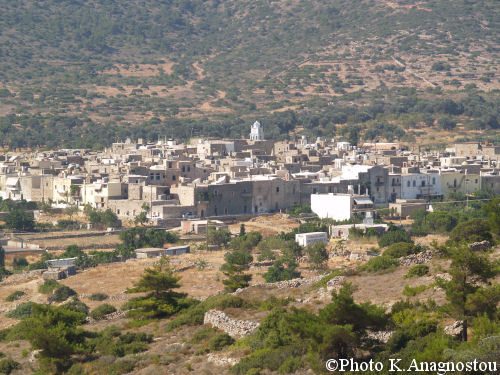lympi is a 14th century medieval village located 31 Km south of the town of Chios and 6 Km after Pyrgi on the road to Mesta. It has been designated a listed monument. It keeps its houses tied tightly together in what seems like a closed and compact form. The streets are cobbled and narrow. This type of fortress, a four-cornered structure, was built for protection against the frequent attacks by pirates and Turks, as well as for better cultivation of the mastic bush.
|
It lies in small, treeless valleys far from the sea. The gray houses had doors and windows that faced to the village, so that if somebody was looking from outside the village, he could only see walls without any windows or gates, as if it is a fortress. The outer walls contained adjoining parapets with small towers at the corners and only one gate. The inhabitants could enter and leave the village only through a door which can be found today at the location Kato Porta. At the center of Olympi rises the defense tower, a form of Acropolis-20 meters high – where the inhabitants took refuge in the case of attack.
|
|
The streets are narrow, stone-paved, and are connected to the central tower square. At frequent intervals there are transverse archways supporting the structures, as well as vaults and arches supporting the rooms. The functional character of the houses was geared to defense, and thus the inhabitants were able to move about the roofs without being seen. The four-sided shape of these houses, their thick structure, the defense system, the gray walls, the small areas for general use, and their relation to the treeless, natural surroundings, convince us that the medieval villages of Chios were built on a fixed plan which may have been imposed by the Genoese. |
An excellent, worth visiting monument is the “Trapeza”, a two-stories building with large rooms which is well preserved since the medieval period.
Traditional feasts are organized many times through the year, besides the standard feast on Shrove Monday, when the traditional custom of Agas (a Turkish official) who burlesques the trials of the Turkish judges as they were done in the Turkish period, takes place.
The nearest beach is Kato Phana at a distance of 6 Km. The ruins of the temple of Phanaios Apollo are on the same way.

